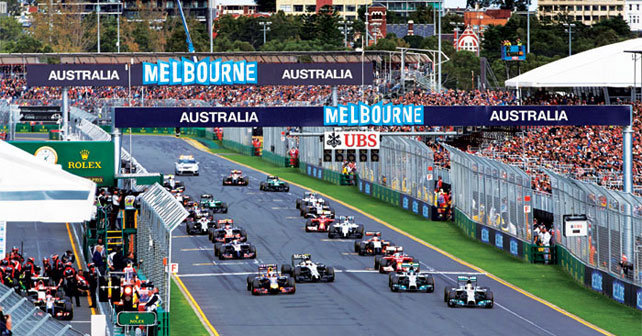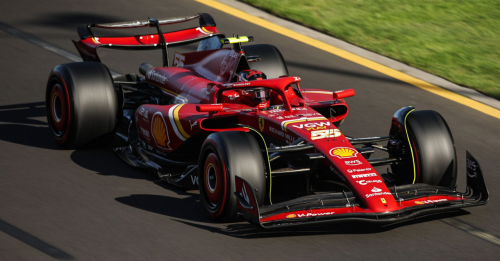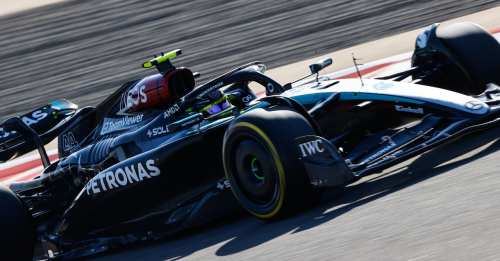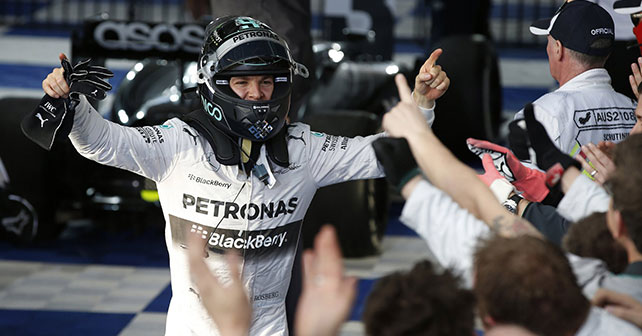I write this column a few days after the conclusion of the Australian GP. And, quite frankly, I took those few days to sit back and reflect on the proceedings of the weekend. There were multiple thoughts in my head. Of course, the biggest and most decisive being the powertrains and their sound – or lack thereof. The ugly phallic noses. The fuel management issue that threatens to make F1 like Le Mans or WEC. The rookies. And last, but not least, the Pirellis – which were largely untested during the pre-season.
The initial reactions, of course, were of outburst and disbelief – but I guess that’s what happens to most of us when subjected to change. But if one were to react to the changes without getting mired in the politics of the sport, it’s safe to say that the future of Formula 1 has arrived! The V10’s and V8’s will be missed, but it’s time that Formula fans accept that the V6 turbo-era and their energy recovery systems as the way forward.
Yes, I did miss the grunt of the V8 engines, and I sincerely hope that the engine manufacturers and other stakeholders work together to find a way of matching the ferocious sound of the past without compromising on the superlative efficiencies that the sport has managed to achieve in 2014. After all, the CEO of an automobile company would pay billions to harness this technology in road-going machines. But, then again, the awe inspiring spectacle – which comes, in large part, from the thumping sound – is an important attribute. The speed is almost secondary. In F1’s case, the sound heralds the emergence of a racing car at full chat.
Transfer of technology has been a discussion in Formula 1 for the past few decades, and it’s only now that the technology used in F1 cars can truly be relevant for the road – more so than ever before in the history of the sport. This actually benefits the sport in two ways. First, it’s more attractive to manufacturers – testimony to this is Honda’s return, and hopefully Toyota, BMW and others will get interested too. Second is the financial stability that the manufacturers would offer. Currently, it’s only the top four teams that have managed to break away from the vicious money-draining circle of Formula 1. Should other manufacturers join the Formula 1 brand wagon, not only will the sport see more investments, but also more global brands lining up on the grid.
And if I may list my utmost disappointment in this column, it would be towards the ‘ugly noses’ that almost all cars don. This is also where I believe the FIA could have done a better job while writing the regulations. The brains in the Technical Working Group should have been able to anticipate the ‘look’ that the 2014 cars would take when writing the regulations – and they should have provisioned for a modesty panel (a ‘nose job’) in 2014 itself. It’s disappointing that the lack of foresight has cost the sport yet again, with visually unappealing cars. Remember the platypus noses?
Reasons for delight in Melbourne were plenty though. And, no, Vettel and Hamilton’s retirement wasn’t among them! First-and-foremost would be the ability of the sport to adapt to such mammoth rule changes and put up a good show in the span of four months. A show that I highly doubted would be F1 worthy – in the opening race specifically. It was also heartening to see 15 cars be classified as finishers, instead of the widely assumed single digits. And the finishers were ‘racing’ to the finish line, and not just ‘cruising’ as predicted by many pundits and fans (I can’t recollect if I was one of them).
It was a visual delight to see the drivers working hard behind the wheel while trying to master the overdose of torque and lack of overall grip. And I don’t mean to say that driving an F1 car in 2013 was easier, I only mean that, in 2014, their efforts are more visible. And the sound of the crowds, radio conversations, and the screeching of the Pirelli tyres are more audible!
Uncertainty played its role during the Australian GP, and I expect the teams and drivers to get used to their new machines after which the proceedings will be far more stable – but I hope by that it doesn’t get boring, and we go back to relying on Pirelli’s degradability or an engine’s unreliability to decide race results. I mean, who knows, had it not been for Hamilton and Vettel’s retirements, would they have been able to challenge Rosberg for victory? And, of course, watch out for the Williams.
While fan opinions were split on Ricciardo’s six hour-long interrogation, and eventual disqualification, I believe that Ricciardo’s case is possibly the future of scrutineering in Formula 1. Given the complexity of the rules, the FIA will need a few more races to offer absolute clarity, which means it could take them longer to declare eventual race results – sigh.
And, last but not least, the rookie. Ricciardo, Magnussen, Kvyat, and Bottas drove phenomenal races to score points and take the fight to their more experienced teammates. Much like the new age power-units, I’m convinced that these rookies are the future of Formula 1. And for a change, I am glad that Formula1’s future has found its way to the sport basis talent and not bags of cash!
























Write your Comment